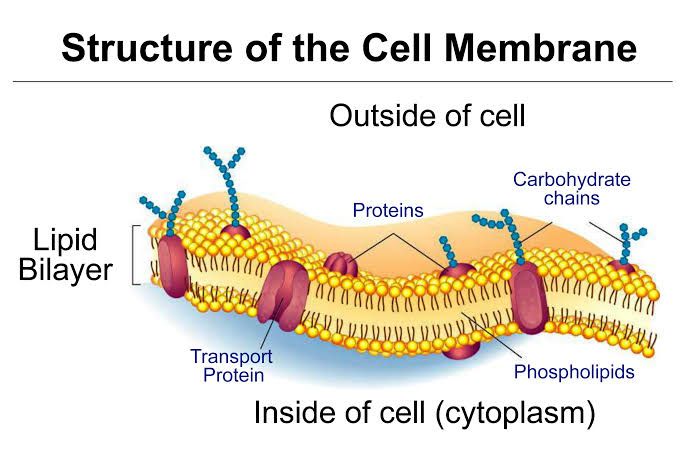
Lipid barrier of the cell membrane
The cell membrane, also known as the plasma membrane, is primarily composed of a phospholipid bilayer that serves as a barrier to separate the internal environment of the cell from the external environment. This lipid barrier is crucial for maintaining homeostasis and protecting cellular integrity. The hydrophobic (water-repelling) tails of phospholipids face inward, while the hydrophilic (water-attracting) heads face outward, creating a semi-permeable membrane that allows certain molecules to pass while restricting others.
Simple Diffusion and Diffusion through the Cell Membrane
Simple diffusion is the process by which molecules move from an area of higher concentration to an area of lower concentration without the need for energy input or assistance from proteins. This movement occurs directly through the lipid bilayer if the molecules are small and nonpolar, such as oxygen and carbon dioxide.
Diffusion through the cell membrane refers specifically to how substances cross this lipid barrier. While simple diffusion allows certain small and nonpolar molecules to pass freely, larger or polar molecules often require specific mechanisms to traverse the membrane effectively.
Facilitated Diffusion
Facilitated diffusion is a type of passive transport that enables substances to cross membranes with the assistance of specialized proteins. Unlike simple diffusion, facilitated diffusion involves carrier proteins or channel proteins that help transport larger or polar molecules across the cell membrane without expending energy. This process still relies on concentration gradients; substances move from areas of higher concentration to areas of lower concentration.
Role of Cell Membrane Transport Proteins
Cell membrane transport proteins play a critical role in regulating what enters and exits a cell. These proteins can be classified into two main categories:
- Channel Proteins: These form pores in the membrane that allow specific ions or water-soluble molecules to pass through.
- Carrier Proteins: These bind to specific substances and undergo conformational changes to shuttle them across the membrane.
Transport proteins are essential for maintaining cellular function by controlling nutrient uptake, waste removal, and ion balance within cells.
Diffusion through Protein Channels and Gating
Diffusion through protein channels involves specific transmembrane proteins that create pathways for ions or polar molecules to diffuse across the cell membrane. These channels can be selective based on size and charge, allowing only certain types of ions (e.g., sodium, potassium) or water molecules (through aquaporins) to pass.
Gating refers to the ability of these channels to open or close in response to various stimuli such as voltage changes (voltage-gated channels), ligand binding (ligand-gated channels), or mechanical stress (mechanically gated channels). This gating mechanism is crucial for processes like nerve impulse transmission and muscle contraction.
Factors That Affect Net Rate of Diffusion
Several factors influence the net rate of diffusion across membranes:
- Concentration Gradient: A greater difference in concentration between two sides increases diffusion rates.
- Temperature: Higher temperatures increase molecular motion, enhancing diffusion.
- Molecular Size: Smaller molecules diffuse more quickly than larger ones.
- Membrane Surface Area: A larger surface area facilitates greater diffusion rates.
- Permeability: The nature of the membrane affects how easily substances can pass through it.
- Distance: Shorter distances between concentrations enhance diffusion efficiency.
Osmosis across Selectively Permeable Membranes—“Net Diffusion” of Water
Osmosis is defined as the net movement of water across a selectively permeable membrane from an area with lower solute concentration (higher water potential) to an area with higher solute concentration (lower water potential). This process continues until equilibrium is reached, where water moves at equal rates in both directions but maintains different solute concentrations on either side.
In biological systems, osmosis plays a vital role in maintaining cellular turgor pressure in plants and regulating fluid balance in animal cells. The selectively permeable nature of membranes allows cells to control their internal environments effectively by managing water flow relative to solute concentrations.







